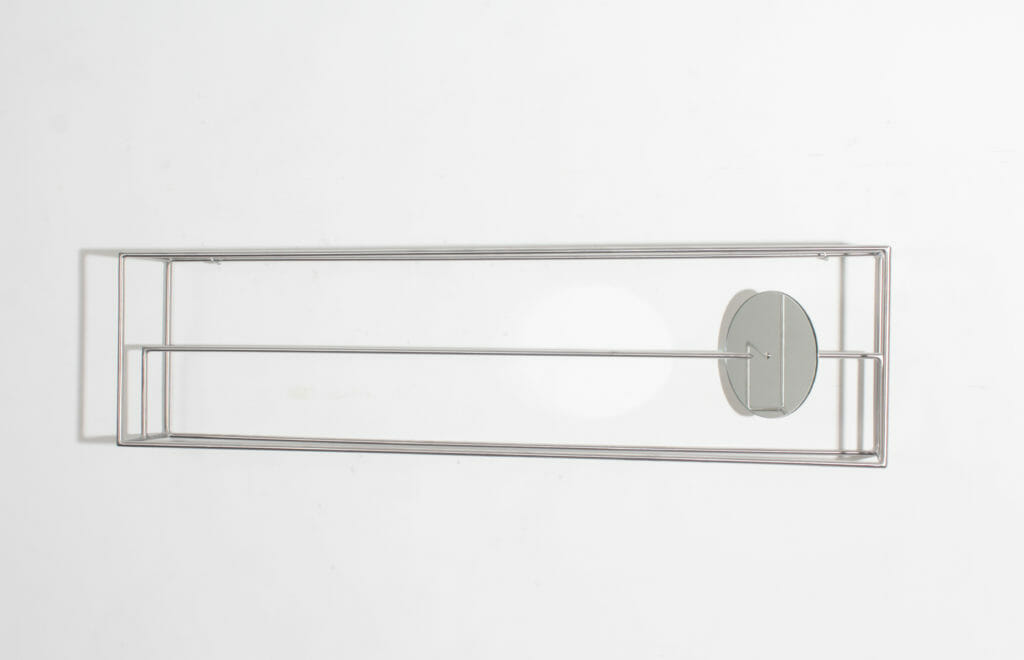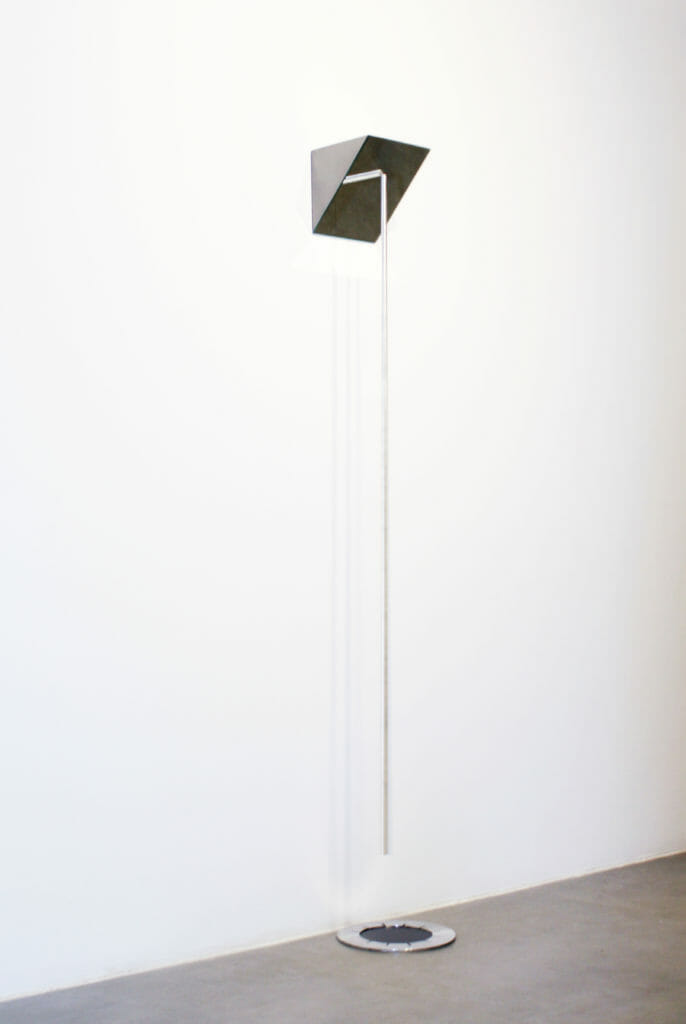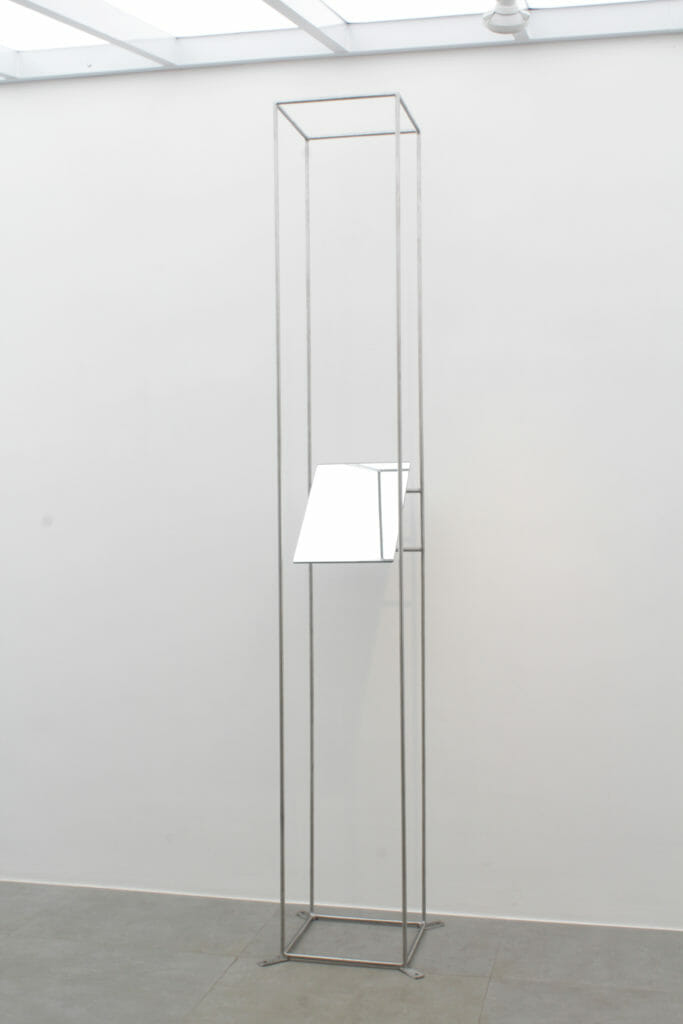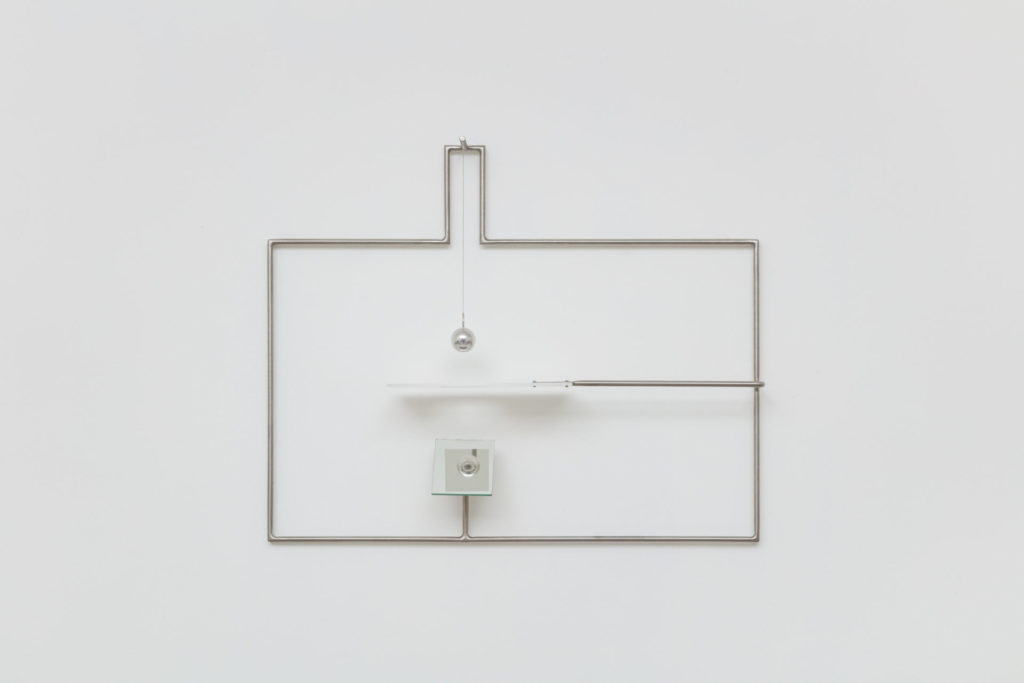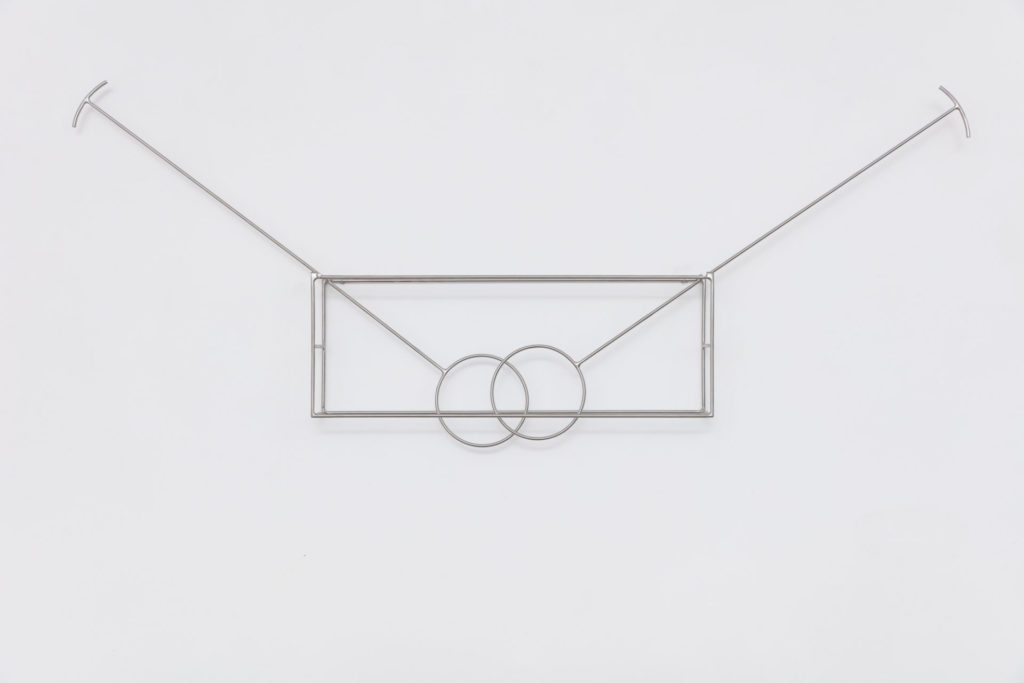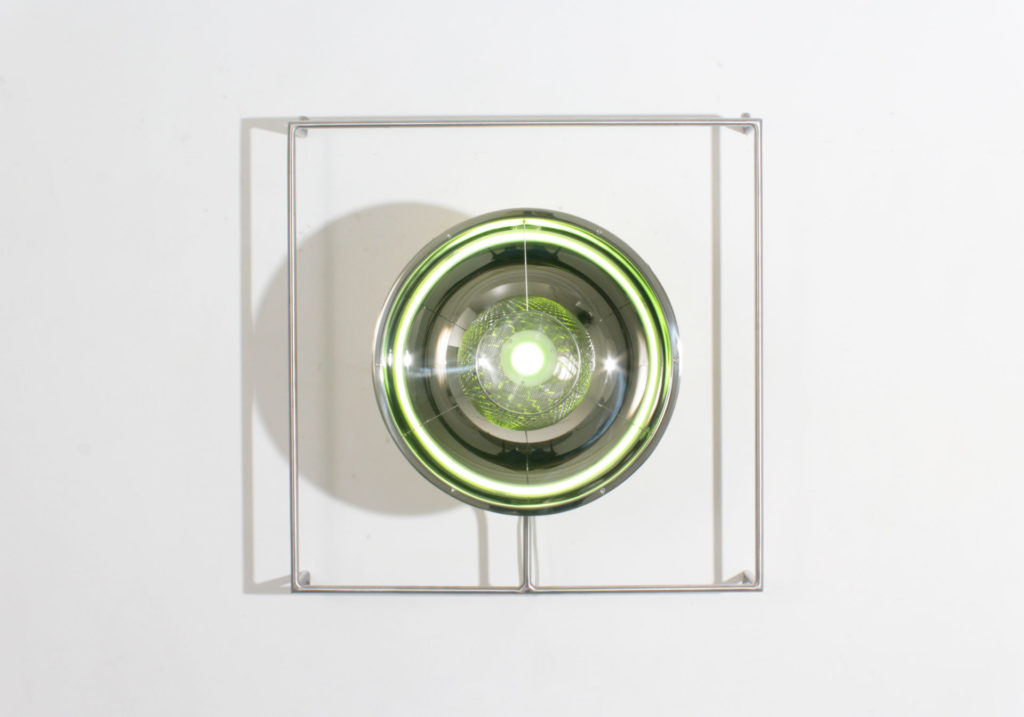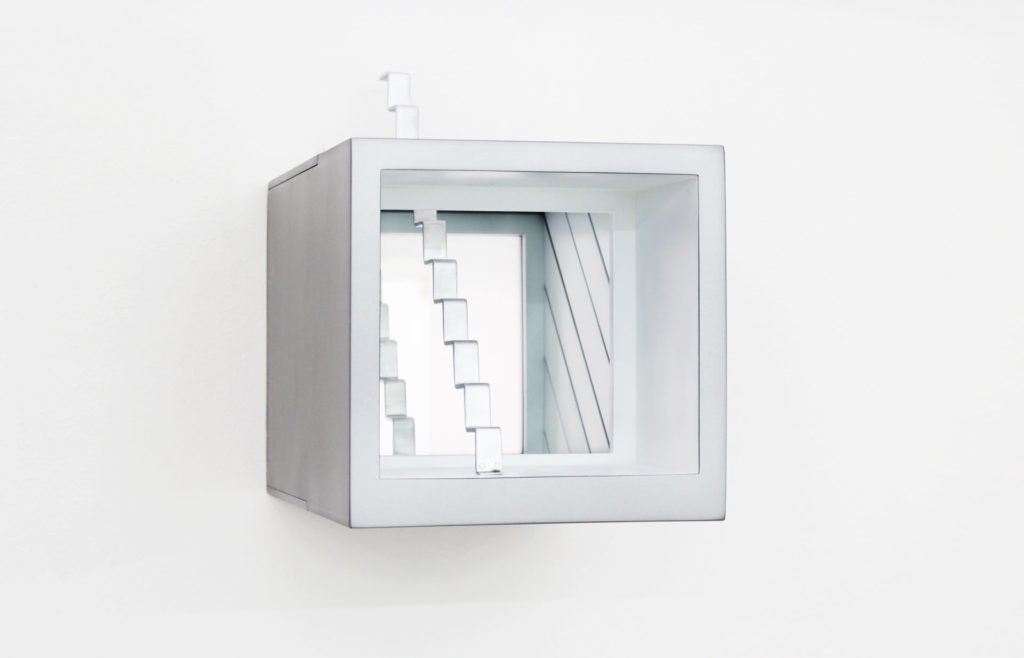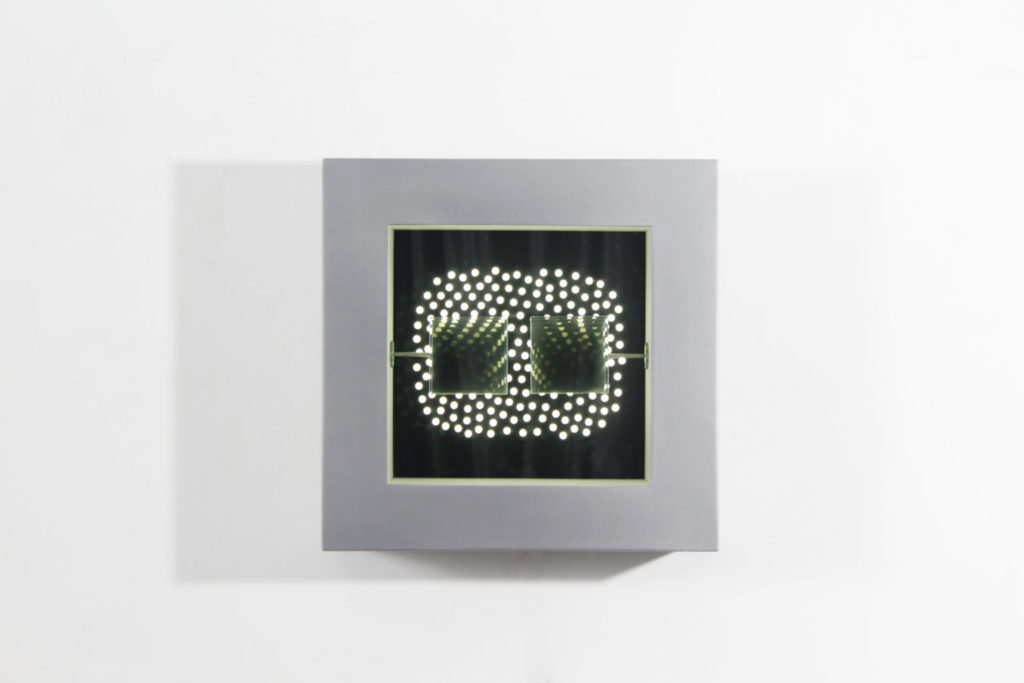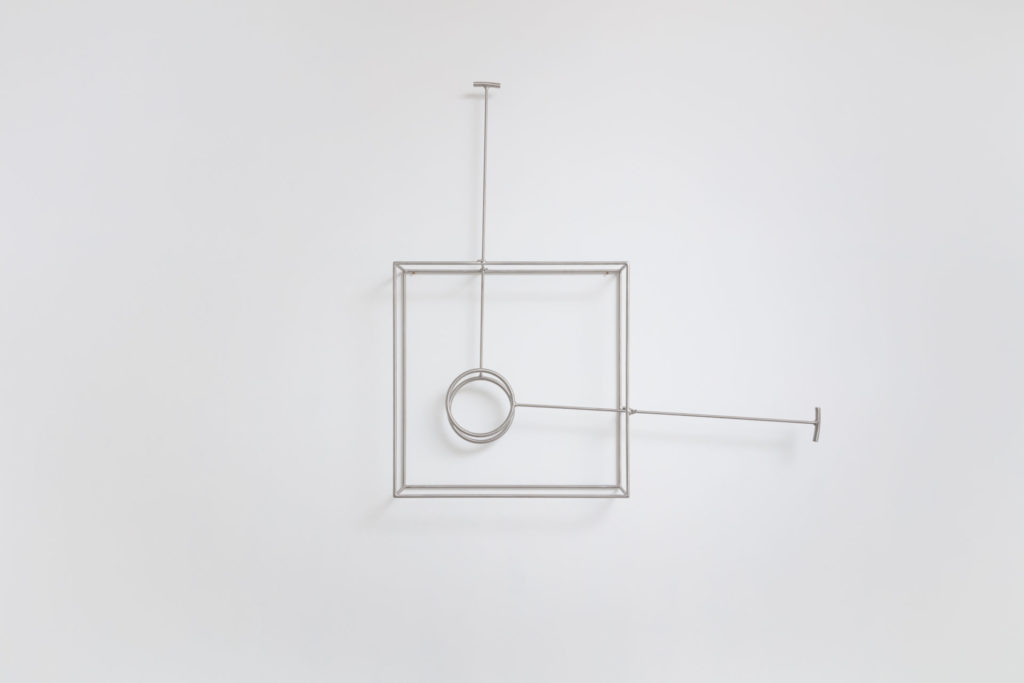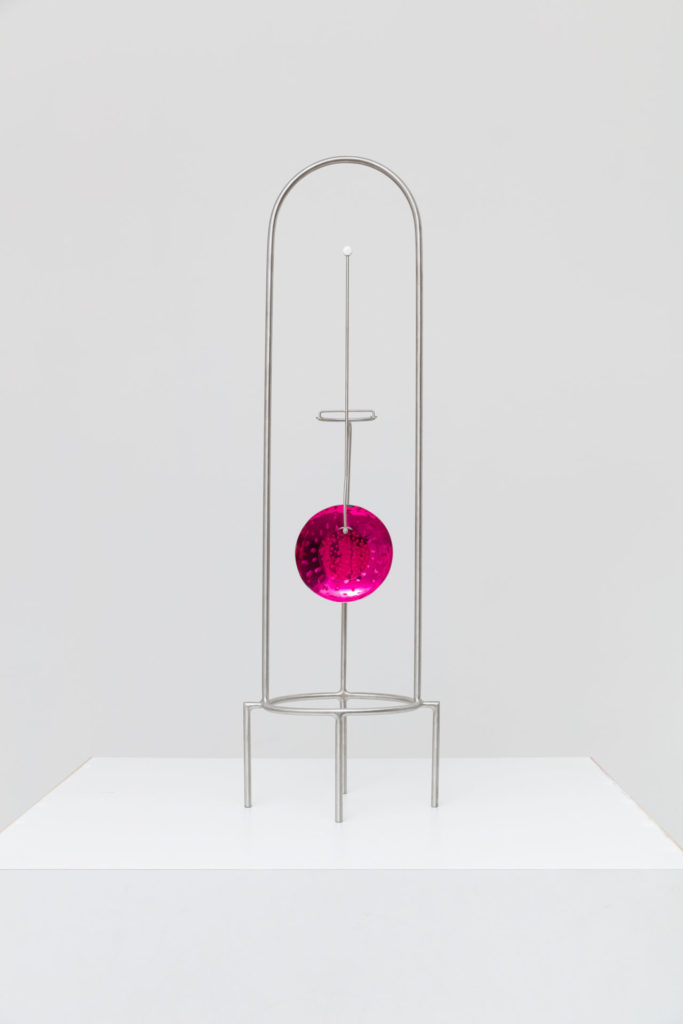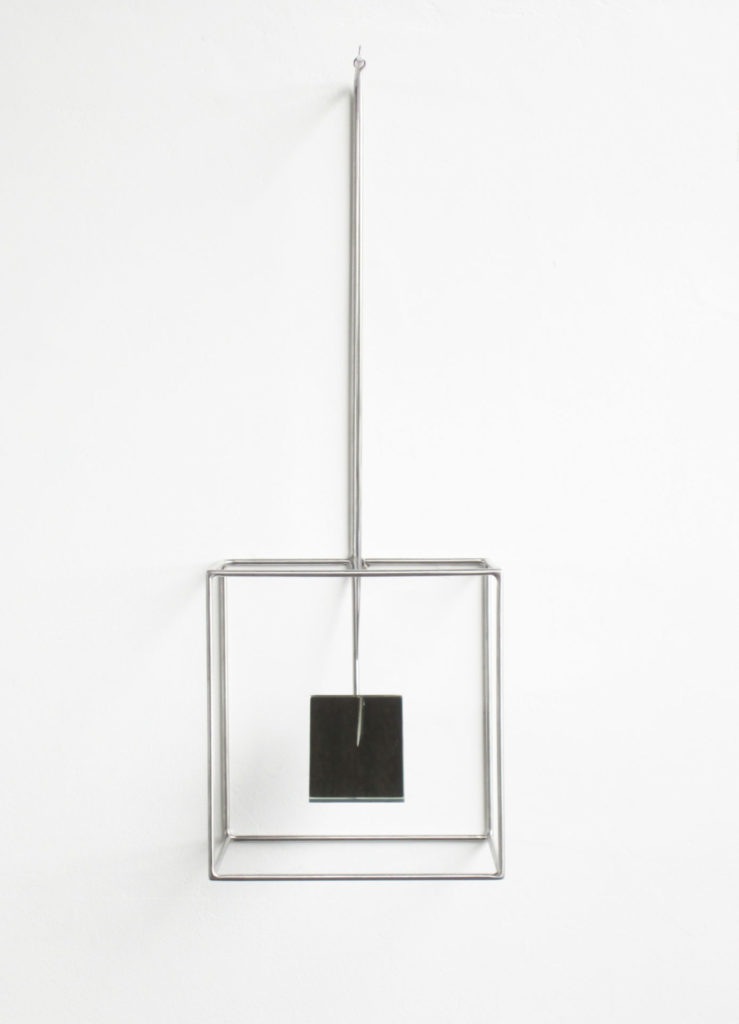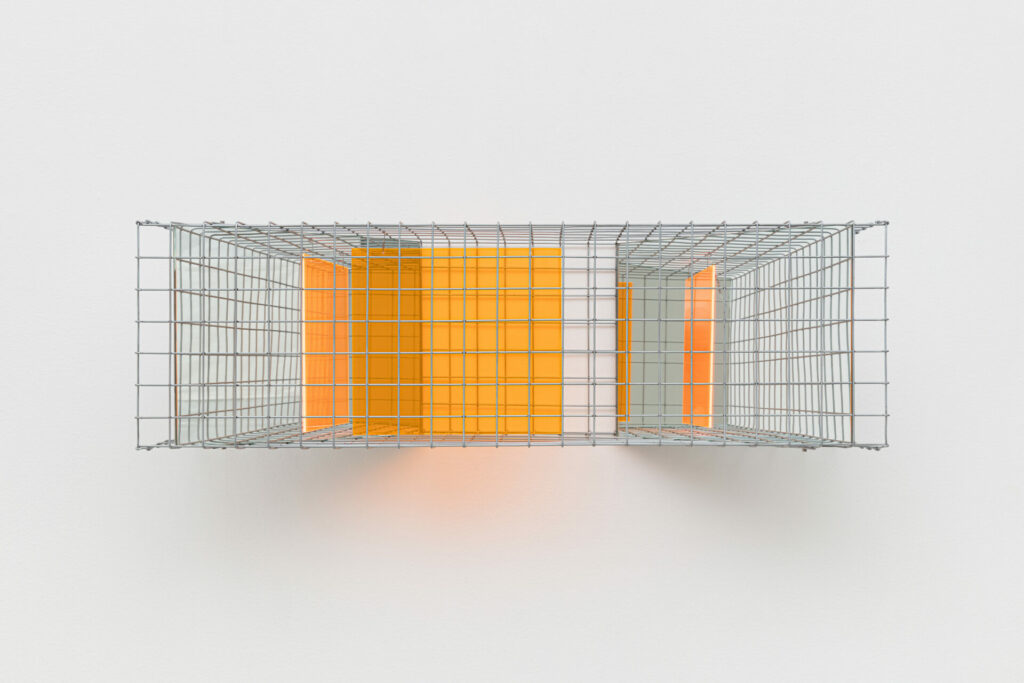Claudio Alvarez lives in Curitiba since 1977. The exhibition ”Como vai você, geração 80?”, held at Parque Lage, in Rio de Janeiro in 1984, marks the beginning of his presence in the Brazilian artistic scenario and of a series of solo and group exhibitions, both national and international. His work has been awarded in several art salons through his career and currently belongs to public and private collections.
As a movement and perception researcher, Claudio Alvarez proposes challenges to the eye, built as mechanisms in which what we see contradicts what we know. Optical illusions, mirror games and lighting, moving objects and dynamic shapes are elements that form its wide repertoire of visual games.
From an early age, Claudio used to collect scrap and create his own toys. His passion for mechanics influenced him to create machines, as small technological simulations, in a period in which the proximity between technology and art raised numerous questions, such as the very function of art and the aesthetic possibilities in the machinery creation, resulting from the junction of art and industry dated from the beginning of the XX century.
His sculptural experiments invite the public to interact, so that they discover in each metallic structure a unique movement. This dynamism, caused by the action of the public on the artwork, makes each object react in a way that it creates its own perceptual effects.
The relation between movement and perception is embodied through color in his piece Azul Crescente, in which the pendulum movement enables and gives live to the blue color, making it to resonate rhythmically over a reflective concavity positioned immediately behind.
In Coletor de imagens, the artist uses elements such as light and reflection to create a fun game, in which he explores the nature of images and makes us wonder in what does an image consist, unless in its essence, a composition between matter and light?
His artworks manage to carry in themselves the worries of conceptual and historical order concerning the role of art in the technological world, at the same time in which they present a playful experience of easy apprehension both to the general public as to the specialized one, featuring him as an indispensable artist to the comprehension of the art world today.
Artist Claudio Alvarez tells a little about his process during the quarantine and presents his studio.



